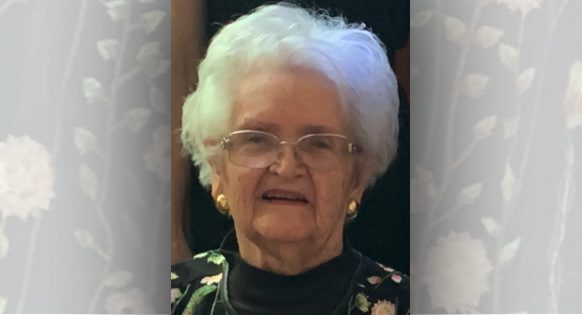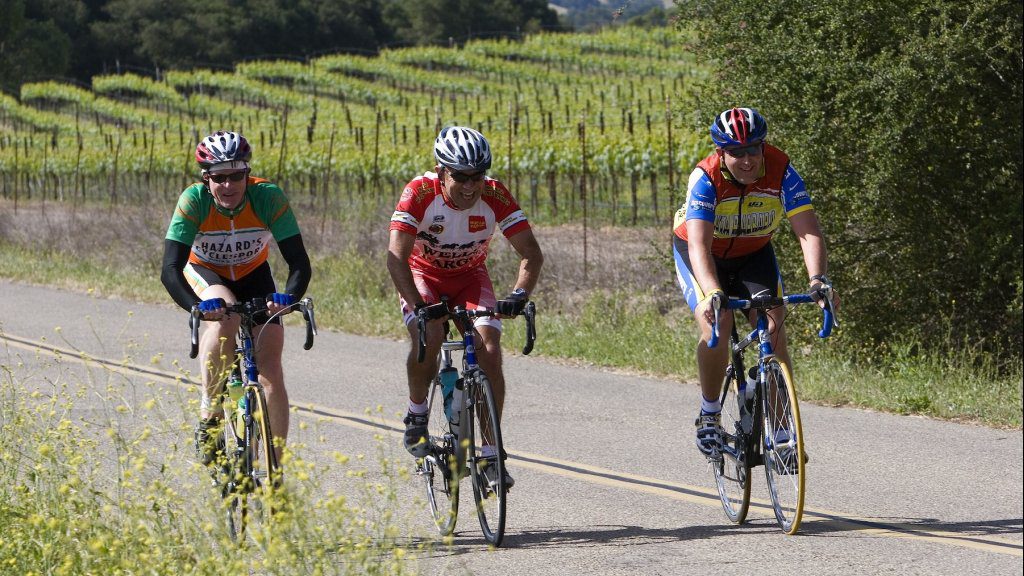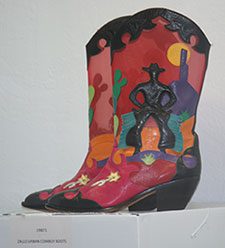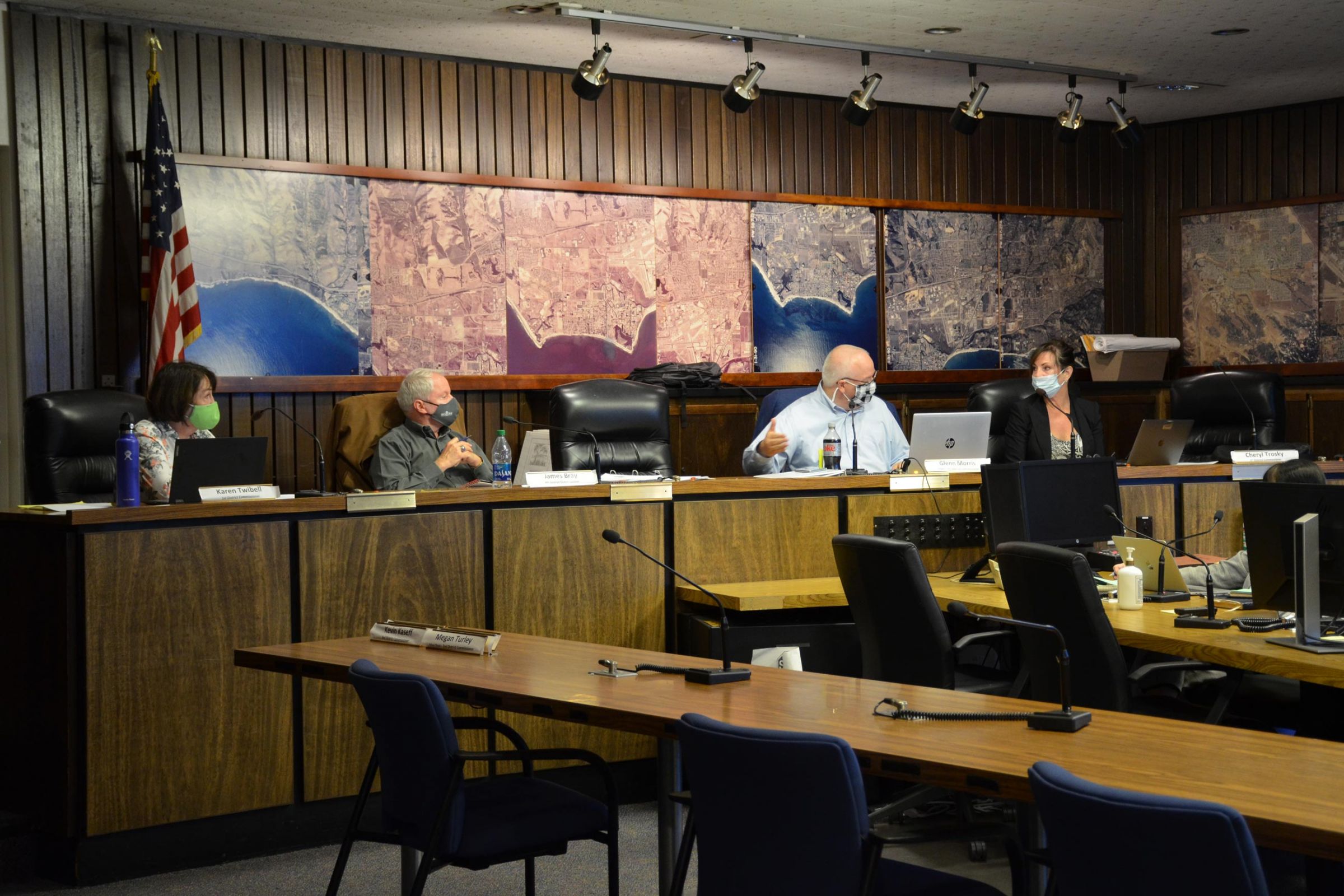Phyllis Axtell of Atterdag Village will turn 100 years old on May 9
Solvang resident Phyllis Axtell will celebrate her 100th birthday on May 9 surrounded by family and friends. She resides at the Atterdag Village of Solvang. Many may recall having her as their teacher or as the principal of Ballard School.
The third of seven children, she was born “with the assistance of a real doctor, Dr. Goss” she said, who delivered her on her uncle Garret Ferguson’s farm in, reportedly, a Sears & Roebuck Catalogue house in Foster near Carrington, North Dakota. Her parents were Donald John Graham and Anna Jemima Ferguson. She was baptized Phyllis Mae Graham at the Congregational Church in Bordulac, which was built by her grandfather John Ferguson. The church no longer exists. Calvin Coolidge was President.
“We had a car, a Baby Overland with side curtains and a telephone (one long and two short rings on a party line), but little else of the modern world — no electricity, no running water, no indoor plumbing, or bathrooms. Only a one- or two-holler outhouse, which was miserable in the winter,” Axtell said in her autobiography in 2017.
“We had an old washtub which became a bathtub every Saturday night,” she continued. “Water had to be hauled in from the well in buckets, heated on a wood stove so you didn’t get fresh water for each person needing a bath.”
Like many in those days, Axtell’s family worked on the farm.
“The farmwork was done with teams of horses. I do not recall ever seeing a tractor until my grandfather bought a new beautiful green John Deere tractor, which he was really proud of,” she remembered. “We later moved to the Pete Peterson farm which was about a mile from where Grandma and Grandpa Ferguson lived. We had a lot of fun and freedom to go and play wherever we wanted. We would build tree houses, forts, snow caves, ice skate on ponds, wherever our imaginations took us.”
Her father grew grain, raised cattle, sheep, pigs, and chickens, and her mother raised free-range turkeys which she prepared for market.
“I remember a line of turkeys hanging by their feet on the front porch. We would be needed to help pluck all those turkeys and remove all the pin feathers. I remember taking trips into town to market in the winter, traveling on horseback or on a horse-drawn sled.”
Axtell’s family took care of many kinds of animals.
“Another fond memory was how my dad would bring the little orphaned sheep into the house and make beds for them and feed them behind the wonderfully warm kitchen stove,” she said. “We rarely got to keep the animals as pets. Those were wonderful times, playing with my siblings and having close contact with my mother’s family. We always had dinner on Sundays at Grandma’s and she would almost always have an angel food cake for dessert.”
The family eventually moved to another farm, according to Axtell.
“We moved to Hoffert’s farm in Nordmore County. I attended a one-room schoolhouse, often taught by the Ferguson cousins,” she said. “We’d walk one mile to school each day and were excited to have the weather warm enough so we could run home barefooted. My sister Lucy had taught me how to read and print so I started school in the second grade.”
Farmers were self-sufficient, and there was money to be made farming. But her father seemed to have gotten into the farming business too late to reap the benefits of the once high price of wheat, not to mention a seemingly endless drought and pestilence.
“My dad had borrowed money from the bank to buy seed and equipment for his farming business. But life was hard on the farm. I recall seeing my mother working in the fields alongside my dad while raising little kids and tending to a big garden, canning vegetables and fruit for winter, sometimes when the temperature outside was about 118 degrees,” Axtell said. “It was then that I knew I never wanted to be in the farming business. Farming could be a hit or miss proposition, and during this time, there were plagues to rival those in the Bible; there was a seven-year drought, rust ruined crops one year, then the grasshoppers, so thick they stopped up the grill on the car radiator and ate all the crops. Then flocks of gulls descended out of the sky to eat the grasshoppers. I don’t remember exactly but I think the plagues lasted about 10 years.
“My dad worked so hard to make the farm a success but with no income except the little he got from setting 5-gallon cans of cream out on the road to be picked up, the bank eventually foreclosed, and took everything — animals, machinery all the tools related to farming. We were evicted and again moved to Uncle Garrett’s empty farm.”
Then came a career change for Axtell’s father.
“About the time that my brother Donald was born my dad got a job as foreman on a road job, probably a WPA project as part of FDR’s programs to use unemployed people to improve roads, buildings, dams, etc,” she recalled. “He eventually landed a job as executive secretary of the Welfare Board, which was much more in line with his career ambitions. He worked hard and enjoyed his work.”
But his new job brought another move to Carrington in 1932. She was in fifth grade at the time.
“[At my new school] We were offered Latin, grammar, office skills, band, chorus, physical education, and home economics as well as the regular curriculum,” she said. “We had great teachers some of whom were interesting characters. We enjoyed extra-curricular activities such as sports, band, chorus, drama, public speaking, to name a few. All of us children enjoyed our years at Carrington High School.”
After graduating high school in May 1941, she took the $35 she had saved up and drove to Los Angeles with a man who was heading for one of California’s coastal towns, where he had accepted a teaching position. She paid him $15.
“I had been offered a position as ‘nanny’ for a doctor and his wife who had a newly adopted daughter and lived in Seal Beach,” Axtell said. “I attended Compton Junior College in 1942 as a pre-med student and also worked at the National Youth Administration while taking care of the Nelson child, and worked at Woolworth’s on Saturdays for 10 cents an hour. Unfortunately, there was no study time, and I suffered from a severe case of exhaustion. I had to make a change. So, I took a job as a waitress and was advised by one of the older waitresses that this was not a good career choice.”
In December 1941, the Japanese had attacked Pearl Harbor. Then in February 1942 the war came closer to home with the bombardment of Ellwood by a Japanese submarine off the coast of Santa Barbara and the subsequent disappearance of fellow Japanese-American college students who were reportedly placed into internment camps.
“At that time the defense plants were testing and hiring people so as soon as I turned 18 I tested and got a job with Lockheed as a stock clerk, then posting in the Kardex system, then as an expeditor, solving shortage problems for whatever was needed for the production for the war effort,” Axtell said. “I became acquainted with other young people and we rented an apartment together. We worked swing-shift, so after returning home at 12:30 a.m. we would go dancing or to the Long Beach Pier, to the Palladium, to the movies or whatever. Many of the establishments stayed open 24 hours a day.
“I connected up with some of my hometown classmates who were also working at Lockheed and we had a good time spending our new-found money. A cousin of my best friend introduced me to Creighton Axtell and we began dating, and eventually courting. We would go to the beach, to the mountains, or play tennis. We were not extravagant. Creighton’s first priority was saving, war bonds or a bank account or sending money home to his mother. We were married on May 26, 1943, and honeymooned in Muir Woods.”
In 1943, with only a high school education, Creighton was recruited for his engineering skills to work on the development of America’s first jet at Kelly Johnson’s Skunk Works in Burbank. Creighton had his draft deferred until 1944 because he was working on the covert development of the first P-80, the Lulu Belle. Once the plane was constructed, he was drafted by the Army Air Corps to serve during World War II. He and Phyllis moved to Wright Field in Ohio, where Axtell served in an engineering role.
For the remainder of his service, Creighton was stationed at Atsugi, Japan, as part of the American occupation. After leaving the service Creighton and his wife eventually moved back to Southern California, where they both worked for Lockheed. Creighton worked at the Skunk Works factory as a mechanic, building parts for missiles and aircraft, and later was appointed a senior group supervisor of the station installing concept parts in the ailerons and control services on the tail of the P-38.
“We bought one acre of land from friends in the Northridge area, as did other Lockheed friends and formed a group of ‘pioneers’ who began designing and building homes,” Phyllis said. “We all helped each other with the building projects, starting from scratch, mixing our own concrete, dug cesspools, shingled roofs. We lived there for 15 years, adopting two children, 2-week-old James Robert Axtell in 1954 and two years later 10-day-old daughter Nellana Colleen Axtell. Our home in Northridge was complete.”
Eventually, work would bring the Axtell family up to the Central Coast.
“Creighton was offered a job in management with Lockheed at Vandenberg Air Force Base in 1959,” Phyllis recalled. “He moved to Solvang and I followed with the two children after selling our home in Northridge. We rented a house on Second Street, where Theaterfest is now located, and eventually purchased an acre of land in Janin Acres, where we built our home. It was completed in 1962 and we moved in.”
Creighton and Phyllis both spent a lot of time taking night classes, acquiring B.A. and later M.A. degrees. Phyllis completed her B.A. and M.A. at UC Santa Barbara, while Creighton finished his B.A. at Northridge University and his M.A. at Chapman University.
Creighton worked for Lockheed for 26 years. After his retirement, he earned his teaching credentials and taught elementary and secondary school in the Santa Ynez Valley.
“I too went back to school, earning my B.A. and one year of teacher education and was offered a job as teacher/principal of Ballard Elementary School, where I worked for 11 years,” Phyllis said. “I retired for one year then went to work as lead technical editor at Martin Marietta, Vandenberg Air Force Base. I retired in 1987 to continue leading the good life.”
A good life seeing the world and appreciating what was at home, Phyllis noted.
“My degrees in history and English inspired me to travel. We traveled extensively through Europe, Japan, China, Australia, New Zealand, Fiji, South America, Russian, Africa, Turkey, Mexico, Central America, Greece, Italy, Egypt, Israel, and the United States,” she recalled.
“But our greatest blessings have been from our family. Our kids have been of such comfort and joy in so many ways. My ‘good life’ in Solvang included church, Eastern Star Women’s Club, PEO, hiking, and playing bridge.”
The Axtells even served as the grand marshals for the Solvang Independence Day Parade in 2018.
Axtell said her time living in the Santa Ynez Valley reminded her of the life she led as a child in other parts of the U.S.
“Living in Solvang is much like living in Carrington, North Dakota, a small town where you know almost everyone,” she said. “I have so much to be thankful for, most of all my loving husband, Creighton. Up until his death in January 2023 at the age of 103, he treated me with surprises and took such good care of me for the nearly 80 years we were married. I am also thankful to all of my family and my many friends. I have indeed been blessed in so many ways.”
To anyone wishing to send Phyllis a birthday acknowledgement, please send it to 636 Atterdag Road, Solvang, CA 93463.
EDITOR’S NOTE: This is the “uncut” online version of Phyllis Axtell’s story. A condensed version of the story will run in our print edition coming out on Tuesday, May 7.
Feature Image: A recent photo of Phyllis Axtell who will be celebrating her 100th birthday on May 9. Photo by Nellana Lobdell








